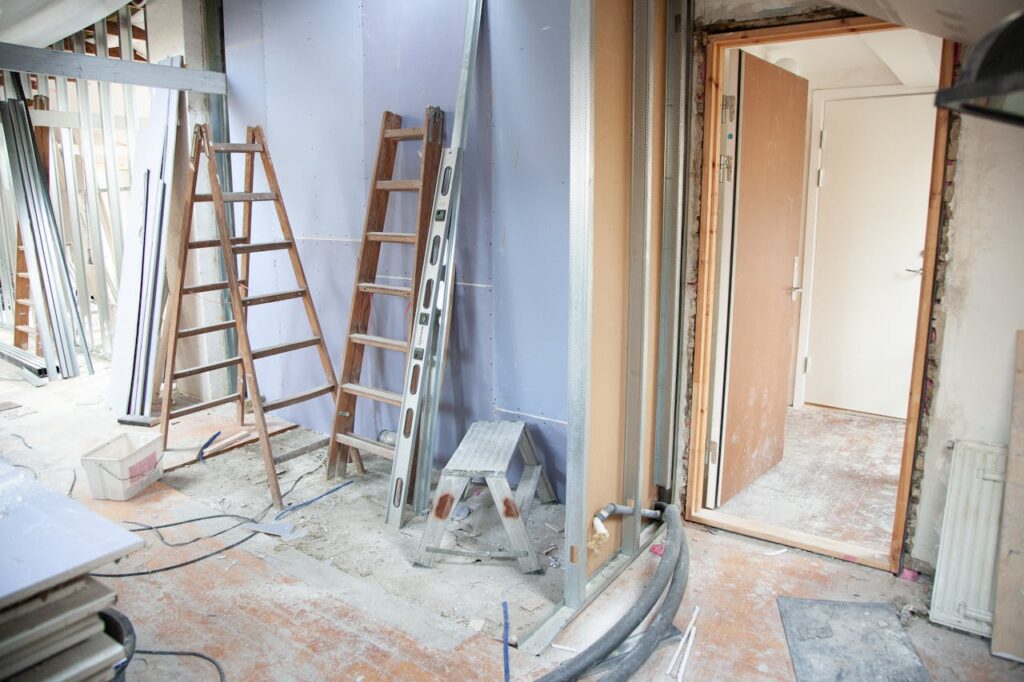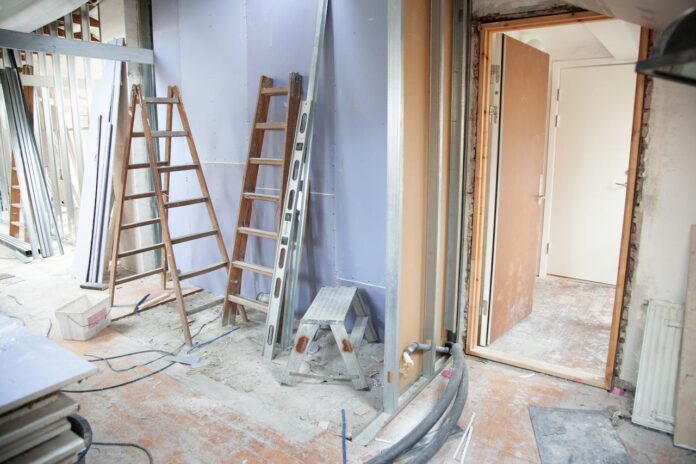Home improvement projects can be exciting and rewarding, but they can also come with a hefty price tag. From construction costs to home repairs, the expenses can add up quickly. However, there are ways to save money on home improvement projects without sacrificing quality. In this article, we’ll explore some tips and tricks for cutting costs on your next home improvement project.
Plan Ahead and Set a Budget
The initial step in saving money on home improvement projects is to take the time to carefully plan ahead and establish a well-thought-out budget. By doing so, you can effectively prioritize which projects are of the utmost importance and appropriately allocate your funds to achieve your desired results. Additionally, it is crucial to be realistic when setting your budget and take into consideration the potential for unexpected expenses that may arise throughout the duration of the project. By leaving some wiggle room in your budget, you can better account for any unanticipated costs that could potentially impact your overall financial plan.
Research the costs of materials and labor for your desired projects and compare prices from different suppliers and contractors. This will give you a better idea of how much you need to budget for each project and where you can potentially save money.

Consider DIY Options
One of the most effective strategies for cutting costs on various home improvement endeavors is to take on the task yourself rather than hiring a professional. By choosing to pursue do-it-yourself (DIY) projects, homeowners can potentially save a substantial amount of money. It is important to recognize that certain projects may still necessitate the expertise of a professional, but there are plenty of tasks that can be effectively completed by individuals with access to the appropriate tools and a solid understanding of the necessary techniques.
For example, painting a room, installing new light fixtures, and even minor plumbing repairs can all be done by homeowners. By taking on these tasks yourself, you can save on labor costs and only need to pay for materials.
Shop Around for Materials
When embarking on a home improvement project, it is important to take the time to thoroughly research and compare prices from various suppliers before making a decision. By exploring multiple stores and online retailers, you will have a better understanding of the range of prices available for the materials needed. This diligent approach could potentially save you money and ensure that you are getting the best deal possible. Do not hastily settle for the first supplier you encounter, as there may be significant price disparities that could impact the overall cost of your project.
Additionally, consider purchasing materials in bulk or during sales to save even more money. Just be sure to only buy what you need and avoid overspending on unnecessary items.
Use Recycled or Reclaimed Materials
One effective strategy to cut costs on home improvement endeavors is to incorporate recycled or reclaimed materials into your project. By opting for materials that have been repurposed, not only are you making a positive impact on the environment by reducing waste, but you are also potentially saving a substantial sum of money in comparison to purchasing new materials. Embracing sustainable practices in your home improvements not only benefits your wallet, but it also aligns with a more eco-friendly mindset.
For example, instead of buying brand new cabinets for your kitchen renovation, consider purchasing used cabinets from a salvage yard or online marketplace. With a fresh coat of paint or stain, they can look just as good as new and cost a fraction of the price.

Don’t Overlook Secondhand Furniture and Decor
When it comes to sustainable home improvement projects, one important aspect to consider is the option of purchasing secondhand furniture and decor. Not only does this help to reduce waste by giving items a new life, but it can also save you money in the process. By exploring thrift stores, garage sales, and online marketplaces, you can often find unique pieces at great prices that fit perfectly with your aesthetic vision for your space. Additionally, choosing secondhand items can add character and charm to your home, as each piece comes with its own history and story. So next time you’re planning a home renovation or update, don’t overlook the value of incorporating secondhand treasures into your design.
Not only will this save you money, but it can also add unique and interesting pieces to your home. Just be sure to thoroughly inspect items for any damage or wear before purchasing.
Do Your Research on Contractors
When embarking on a home improvement project that is beyond your own abilities, it is crucial to enlist the help of a professional contractor. Take the time to thoroughly research and vet potential contractors before making a decision. Reach out to multiple contractors to request quotes for the project, ensuring that you compare their prices and services to find the best fit for your needs and budget. Do not hesitate to negotiate for a better price or inquire about any discounts that may be available. Additionally, ask for references from previous clients to gain insight into the contractor’s reliability, quality of work, and overall satisfaction with their services. By taking these steps, you can feel confident in your choice of contractor and ensure a successful home improvement project.
It’s also important to make sure the contractor is licensed and insured. This will protect you from any potential liability or damages during the project.
Consider Alternative Financing Options
If you find yourself lacking the necessary funds to cover the costs of your home improvement project right away, it may be beneficial to explore alternative financing options that can help you achieve your goals. One potential solution could be to apply for a personal loan from a financial institution, which can provide you with the necessary funds to complete your project while allowing you to make affordable monthly payments over time. Another option to consider is taking out a home equity loan, which uses the equity in your home as collateral to secure a loan with a potentially lower interest rate than other financing options. Additionally, some credit card companies offer promotional deals with 0% interest for a specific period of time, allowing you to spread out the cost of your home improvement project without accruing additional interest charges. By exploring these alternative financing options, you can find a solution that fits your budget and allows you to enhance your living space without the stress of paying for everything upfront.
Just be sure to carefully consider the terms and interest rates before committing to any financing option. You don’t want to end up paying more in the long run.
Prioritize Necessary Repairs
When faced with the task of handling home repairs, it is crucial to carefully evaluate and prioritize each one to determine their level of urgency. By categorizing repairs based on necessity, homeowners can effectively manage their budget by addressing the most pressing issues first. By doing so, they can prevent small problems from escalating into major, costly repairs that may arise unexpectedly in the future.
For example, a leaky roof or faulty electrical wiring should be addressed immediately, while cosmetic repairs can be put on hold until you have more funds available.
Don’t Be Afraid to Negotiate
When working with contractors or suppliers, it is important to remember that negotiating for a better price is not only acceptable but also encouraged. By engaging in discussions about pricing, you can often find that many contractors are open to working with you to reach a mutually beneficial arrangement. This is particularly true if you are a repeat customer or if you have a large project that they are eager to work on. Building a strong rapport and open line of communication with contractors can lead to significant cost savings and a more positive working relationship overall.
You can also negotiate for discounts on materials or labor by offering to pay in cash or by referring other potential clients to the contractor.
Consider Doing Projects in Phases
When embarking on a significant home improvement project, it is essential to consider breaking it up into smaller, more manageable phases. This strategic approach can provide numerous benefits, including helping you to effectively budget your expenses and ultimately save money in the long run. Furthermore, dividing the project into phases allows for a more flexible timeline, giving you the opportunity to reassess your progress along the way and make any necessary adjustments or modifications as needed to ensure the desired outcome is achieved. By taking this incremental approach, you can approach each phase with greater focus and attention to detail, resulting in a more successful overall project completion.
For example, if you’re renovating your entire kitchen, you can start with the cabinets and countertops, and then move on to the flooring and appliances in a later phase. This can also help you avoid living in a construction zone for an extended period of time.
Conclusion
Home improvement projects don’t have to break the bank. By planning ahead, doing some tasks yourself, shopping around for materials, and considering alternative financing options, you can save money on your next project. Don’t be afraid to negotiate and prioritize necessary repairs to stay within your budget. With these tips, you can achieve your home improvement goals without overspending.










